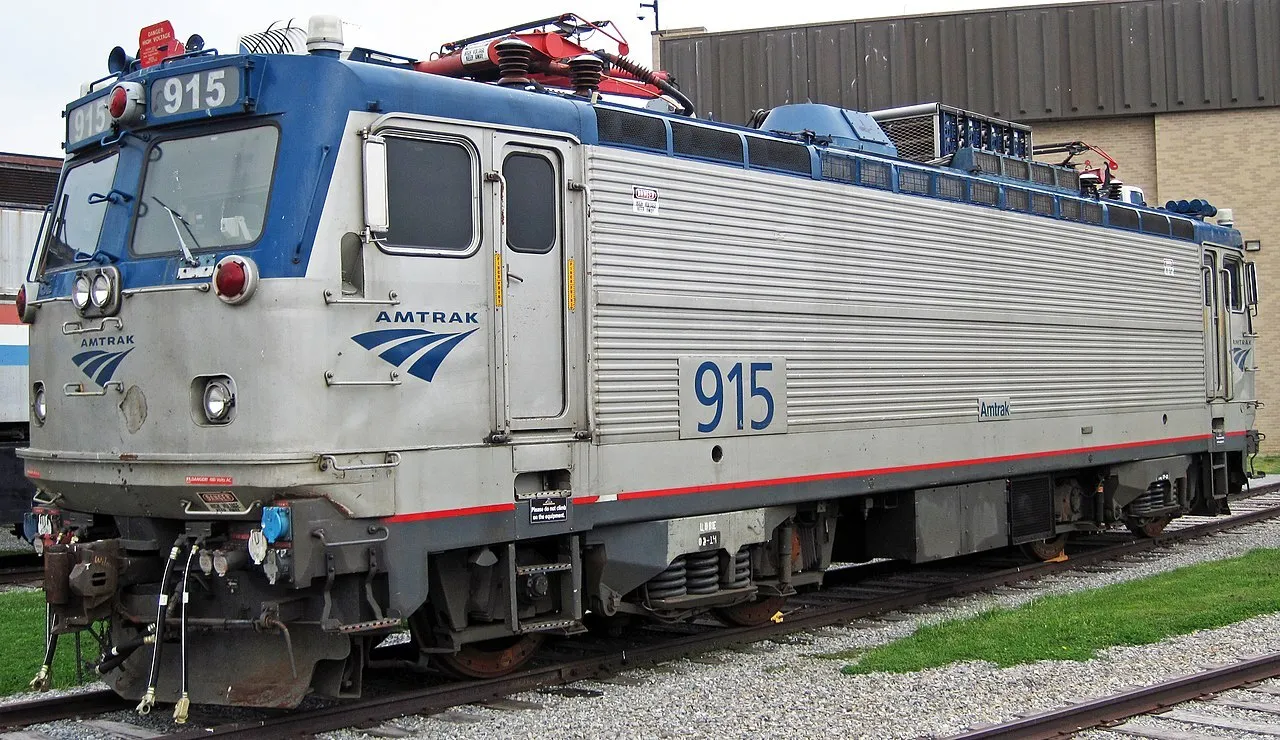Amtrak - 915 electric locomotive (AEM-7) 1 (26824853230)
This is a General Motors Electro-Motive Division AEM-7 electric
locomotive that was built in January 1981. It was used for several
decades by Amtrak to pull passenger trains. It was donated to the
Railroad Museum of Pennsylvania in the town of Strasburg.
Electric locomotives do not burn wood or coal or diesel fuel.
Instead, they use electricity to operate the motors in the engine.
Electric power is delivered via a pantograph atop the engine that
connects with wires running above the railroad tracks. In the above
photo, the pantographs are folded down.
Info. from rgusrail.com: "Amtrak inherited high-speed operations on
the Northeast Corridor from bankrupt Penn Central in 1971.
Electrified passenger services between New York, New York and
Washington D.C. were handled by new Budd Metroliner electric
multiple units and aging Pennsylvania Railroad GG1s. Amtrak's first
replacement for the GG1 was the General Electric E60, delivered in
1974.
However, these proved unable to safely exceed 100 miles per hour
and they were consequently relegated to hauling slower,
long-distance services.
Amtrak then turned to Europe, and brought two units for trials in
1976-1977: the Swedish Rc4 (numbered X995) and the French CC 21000
(X996). Amtrak favored the Swedish design, which formed the basis
for the 7,000 horsepower AEM7, sixty-five of which were built by
General Motors Electro-Motive Division from 1978 to 1988 under
license from Swedish manufacturer General Swedish Electric
Company.
The bodies were built by the Budd Company, with trucks, electrical,
and mechanical parts from Sweden. The Swedish influence led to the
nickname "Meatball", after Swedish meatballs, but railfans
nicknamed the boxy units "toasters".
The first AEM7 (# 900) went into service for Amtrak in 1979 and,
between 1980 and 1982, forty-six more went into service (# 901-#
946). The final seven were delivered in 1988. Two other commuter
operators in the northeast ordered AEM7s: Maryland Area Regional
Commuter ordered four in 1986 for its Penn Line service between
Washington D.C and Perryville, Maryland, and Southeastern
Pennsylvania Transportation Authority ordered seven in 1987.
915 arrived at the museum in June 2015. It is one of the original
direct current (DC) propulsion units, rather than the later
modified alternating current (AC) propulsion units."
Location details: Railroad Museum of Pennsylvania - Strasburg (United States)
Railway companies tagged in this image:
Tag new railway companyRailway vehicles tagged in this photo:
Tag new railway vehicleDiscussion forum





